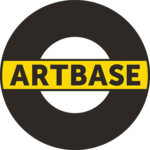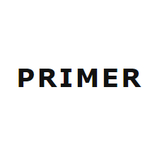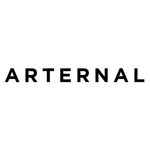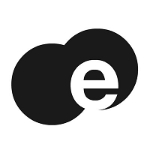List of Best Art Gallery Software
Showing 10 of 22 productsMasterpiece Manager is a tool for managing your masterpieces with ease. This innovative software is designed to simplify the process of organizing and tracking all your creative works in one convenient platform. Say goodbye to scattered files and hel...Read Masterpiece Manager Reviews
ArtBase is a solution for managing and organizing your art collection. With its user-friendly interface and powerful features, ArtBase streamlines the process of cataloguing, tracking, and displaying your art pieces. From museums to private collector...Read ArtBase Reviews
ArtBinder is a tool designed specifically for art professionals to streamline their business operations and enhance their productivity. With its user-friendly interface and innovative features, ArtBinder revolutionizes the way art is managed, shared,...Read ArtBinder Reviews
Primer is a all-in-one tool for simplifying complex tasks, enhancing productivity, and streamlining your workload. With its user-friendly interface and wide range of features, Primer takes the hassle out of project management and organization so you...Read Primer Reviews
ArtMoi is a platform for artists, collectors, and curators to manage their art collections and showcase their work to the world. With its user-friendly interface and powerful tools, ArtMoi simplifies the process of organizing, sharing, and promoting...Read ArtMoi Reviews
Artfundi is a art management software designed for galleries, enterprises, and studios
Artfundi is a comprehensive art management software package aimed at galleries, businesses, and studios. With easy-to-use capabilities and gorgeous design outputs, it enables you to maintain professional, responsive customer interactions and streamli...Read Artfundi Reviews
ArtEngine is a software designed for artists, designers and creators. With its advanced tools interface, ArtEngine offers unparalleled flexibility and efficiency in generating high-quality digital art. Get ready to unleash your creativity and take yo...Read ArtEngine Reviews
Artshell is a one-of-a-kind software designed specifically for art businesses, galleries, and collectors. It streamlines and simplifies all aspects of managing, promoting, and selling art, making it an essential tool for anyone involved in the art wo...Read Artshell Reviews
Arternal is a and innovative art management software that streamlines the way galleries, collectors, and artists organize, manage, and showcase their collections. With its user-friendly interface features, Arternal transforms the art world by simplif...Read Arternal Reviews
galleryManager is an innovative software that seamlessly manages all aspects of your gallery operations. From artist and artwork tracking to inventory management and sales, galleryManager streamlines processes to help you focus on showcasing stunning...Read galleryManager Reviews
- What Is Art Gallery Software?
- Top Reasons Why Businesses Need Art Gallery Software?
- What Are the Top Key Features of Art Gallery Software?
- What Are the Top Benefits of Art Gallery Software?
- What Are the Steps to Choose the Right Art Gallery Software?
- What Are the Types of Art Gallery Software for Different Industries?
- What Are the Technology Trends for Best Art Gallery Software?
- What Are the Deployment Options for Art Gallery Software?
What Is Art Gallery Software?
Art gallery software refers to a computer program specifically developed to assist art galleries and museums in effectively managing their collections, facilitating content display, and organizing digital artwork. Additionally, it functions as a digital platform where art galleries can showcase artwork and curate virtual exhibitions.
The art gallery management software facilitates the storage of information about artwork, enables the tagging of pieces with keywords, and facilitates the organization of artwork within databases for art galleries. Additionally, it has the capability to offer digital resources to art galleries for the purpose of effectively managing their commercial operations.
These resources encompass functionalities such as generating invoices, monitoring inventories, overseeing orders, and other related tasks.
Additional functionalities of the art gallery management system may encompass assistance for payment processing, provision of website hosting services, facilitation of online sales, tracking of shipment, development of catalogs, management of content, and provision of analytics.
The best art gallery software is a versatile tool that is specifically developed to enhance the operational efficiency of art galleries and museums, facilitate the display of artwork, and enable the utilization of collaborative features.
Top Reasons Why Businesses Need Art Gallery Software?
1. Improve visibility: The utilization of art gallery software can facilitate the expansion of one's customer base through the provision of an online platform for art exhibitions, hence augmenting the artist's visibility.
2. Save time: The utilization of the best art gallery software has the potential to enhance various operational aspects of a business, including the organization and categorization of artworks, monitoring the transportation of pieces, and effectively managing inventories. This implementation can result in time savings and improved operational effectiveness.
3. Easy to use: The art gallery management system typically exhibits a user-friendly interface and facilitates a streamlined learning experience, hence enhancing the operational efficiency of art businesses.
4. Easy to find art: The art gallery management software facilitates efficient search and retrieval of artworks, hence enhancing the likelihood of consumer acquisition and purchase.
5. Inventory management: The utilization of art gallery software facilitates enhanced inventory management, enabling more efficient monitoring of stock levels and improved fulfillment of customer orders.
6. Payment processing: The best virtual art gallery software possesses the capability to efficiently handle consumer payments, encompassing both in-person and online transactions.
7. Automate tasks: Art gallery software possesses the capability to automate several processes, including the retransmission of notifications and reminders for payments, thus enhancing the quality of customer care.
8. Increase sales: The utilization of art gallery software has the potential to enhance sales by offering customers a convenient online shopping experience.
9. Automated shipping: The implementation of the best art gallery software has the potential to decrease expenses through the automation of shipping, handling, and order tracking processes, hence enhancing the efficiency of delivery operations.
10. Customization options: Art gallery management system has the capability to be tailored in order to fulfill specific company requirements and provide clients with a customized experience.
11. Social media integration: The integration of the best virtual art gallery software with social media accounts enables clients to engage in art sharing activities and establish connections with your business.
12. Improved customer service: Online art gallery software has the capacity to promptly address consumer inquiries, thereby enhancing the quality of customer care.
13. Analyze customer data: The art gallery management software offers the capability to enhance the comprehension of clients by evaluating their data, including purchasing history and preferences.
14. Monitor activity: The art gallery management system can facilitate the monitoring of consumer browsing activity, so enabling a comprehensive understanding of their interests and the ability to implement targeted marketing campaigns.
15. Security and privacy: The software utilized by art galleries exhibits a high level of security, thereby guaranteeing the protection and confidentiality of consumer data.
What Are the Top Key Features of Art Gallery Software?
1. Digital Asset Management: The software employed by art galleries demonstrates a digital asset management, ensuring the safeguarding and privacy of consumer data.
2. Online Exhibition Management: The capacity to effectively oversee and coordinate many aspects such as dates, juried exhibits, entry forms, fees, and guidelines.
3. Event Management: The capacity to automate the management of scheduling, calendar, and venue information.
4. Online Submissions Management: The capacity to evaluate and either approve or decline artist submissions.
5. Online Payment Processing: The capacity to process online payments and effectively administer online sales while ensuring security measures are in place.
6. Inventory Management: The capacity to efficiently arrange and monitor inventory, encompassing data on pricing and availability.
7. Reporting and Analytics: The system possesses the capability to monitor sales and exhibitions, as well as provide comprehensive data.
8. Customer Relationship Management (CRM): The capacity to effectively oversee client data, including contact information and preferences, as well as the many stages of customer relationships.
9. Marketing Automation: The capacity to develop and execute marketing initiatives aimed at promoting products and services.
10. Licensing: The capacity to obtain a license for artwork and allocate usage authorization.
What Are the Top Benefits of Art Gallery Software?
1. Increased efficiency: Art gallery software serves to automate several manual activities, including the cataloging and tracking of artworks and sales. By implementing such software, art galleries can optimize their commercial operations and enhance overall productivity.
2. Improved accuracy: The use of the art gallery management software has the potential to mitigate the occurrence of manual errors in the processes of cataloging and tracking, thereby equipping art galleries with more precise and reliable data.
This enhanced accuracy empowers art galleries to make well-informed decisions based on the information at hand.
3. Easy collaboration: The utilization of best virtual art gallery software enables the facilitation of collaborative efforts among personnel, including staff members, curators, and conservators. This facilitates the facilitation of talks, evaluations, and approval processes with enhanced efficiency and expediency.
4. Increased visibility: The utilization of the best art gallery software facilitates the online display of artwork, hence enhancing the visibility of art galleries and amplifying their brand recognition.
5. Measurement of success: The art gallery management system facilitates the systematic monitoring of many metrics, including visitor attendance, sales figures, and financial outlays, so enabling art galleries to assess their performance, strategize for forthcoming endeavors, and execute well-informed judgments.
What Are the Steps to Choose the Right Art Gallery Software?
1. One should strive to comprehend the demands and aims of their gallery. Prior to commencing the exploration of several art gallery software alternatives, it is vital to contemplate the goals and objectives that underpin the functioning of your gallery. Take into account the various activities that necessitate the utilization of software and its potential to facilitate the management and expansion of your gallery.
2. Articulate and delineate the requisite attributes and operational capabilities that are necessary. Please compile a comprehensive inventory of the characteristics that hold significance to you.
The aforementioned functions encompass digital cataloging, inventory management, pricing, customer relations management (CRM), online payment processing, and analytics. It is advisable to additionally take into consideration the necessity for support across various devices, languages, locations, and currencies.
3. The art gallery management software is advisable to conduct thorough research on the available alternatives. After establishing the needed features and functionality, commence the process of investigating the available software solutions. It is vital to thoroughly peruse the feature lists and customer review management of various solutions in order to identify the one that aligns with your specific requirements.
4. One important factor to take into account is the concept of scalability. When making a decision on an online art gallery software solution, it is important to take into account the aspect of scalability. It is imperative to ensure that the selected software have the capability to effectively manage various sites and accommodate the anticipated increase in traffic volume over an extended period.
5. Assess the financial implications. When assessing the financial implications of the program, it is imperative to take into account the comprehensive range of functions that are incorporated. When considering the most cost-effective art gallery software package for your requirements, it is important to take into consideration the supplementary features offered by several programs, such as website development capabilities, accounting tools, and marketing functionality.
6. Engage in a trial run of the vehicle. Prior to making a purchase, it is advisable to request a complimentary trial period from the software provider in order to gain a more comprehensive understanding of the system's functionality. During the trial time, users have the opportunity to engage in experimentation with various features in order to ascertain their compatibility with individual requirements.
7. Seek constructive criticism and evaluation from relevant stakeholders. Solicit feedback from coworkers, clients, or fellow art galleries who have utilized the program. This approach can facilitate the acquisition of an impartial evaluation of the software prior to engaging in a transaction.
What Are the Types of Art Gallery Software for Different Industries?
There exists a variety of art gallery software options, which vary depending on the specific industry and the unique requirements of the enterprise. For instance, software specifically developed for museums often incorporates functionalities aimed at effectively managing the storage and cataloging of artwork, alongside facilitating the scheduling of events and programs.
Video management of galleries outside of regular business hours is a prevalent functionality seen in software utilized within this particular market. Software developed for art galleries that specialize in classic or modern artworks often encompasses several functionalities, including inventory management, pricing and e-commerce capabilities, digital marketing tools, and customer relationship management software.
Moreover, several software applications are specifically developed to enable galleries to exhibit their artwork to a global clientele through virtual galleries or platforms.
The software offers solutions for artists and photographers seeking to establish their own gallery by facilitating the creation of a personalized website, enabling the uploading of artwork and digital prints, and managing many aspects of the sales process, including order management, payment processing, and shipping logistics.
Certain software applications may also encompass functionalities for the purpose of effectively managing product inventories, overseeing customer relations, and monitoring analytical data.
In general, a wide range of online art gallery software options exist, each offering distinct functionalities tailored to accommodate the diverse requirements of various enterprises and industries.
What Are the Technology Trends for Best Art Gallery Software?
The technology trends for best art gallery software are:
1. Cloud-Based Software: Cloud-based software provides a reliable and flexible means of accessing data from many locations while ensuring its security. This program facilitates the dissemination of digital collections by galleries to a worldwide audience in real-time, while concurrently safeguarding data integrity and security against harmful operations.
2. Mobile Interface: Mobile interfaces play a crucial role in facilitating access to galleries and their artwork regardless of geographical constraints. They enable visitors to conveniently peruse collections, acquire in-depth knowledge about artworks, and even make direct purchases using their smartphones or tablets.
3. Customization: The capacity to personalize the user experience constitutes a significant criterion when choosing online art gallery software. The available customization options encompass the ability to tailor the visual appearance of the interface to align with the gallery's logo, establish user permissions, and generate personalized reports.
4. Automated Workflows: Automated workflows have the potential to enhance operational efficiency at art galleries by facilitating many tasks, including the implementation of automatic reminders for art openings and the automation of documentation processes.
Automated workflows have the capacity to decrease the amount of time and effort required for the management of day-to-day operations.
5. Social Integration: The incorporation of social media into the best virtual art gallery software enables galleries to effectively promote artworks to a broader and pertinent demographic, while also fostering a dynamic and interactive connection with potential purchasers.
The inclusion of social media capabilities, such as automated sharing and tagging functionalities, can prove advantageous for galleries.
What Are the Deployment Options for Art Gallery Software?
Deployment options for art gallery software generally include:
1. On-premises: The software is installed on the local computer or server of the gallery.
2. Hosted solutions: The art gallery software is provided by the software provider, so relieving the gallery of the responsibility to install or maintain the software.
3. Web-based software-as-a-service: The gallery is able to access the software via a web browser, so enabling them to retrieve data from any computer or device.
4. Cloud-based: The program is deployed on cloud infrastructure and can be accessed using a web browser, enabling the software components to dynamically adjust their capacity based on demand.










